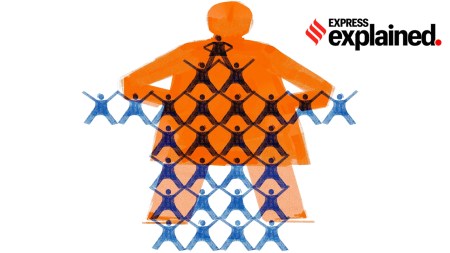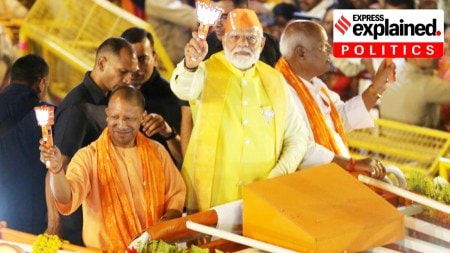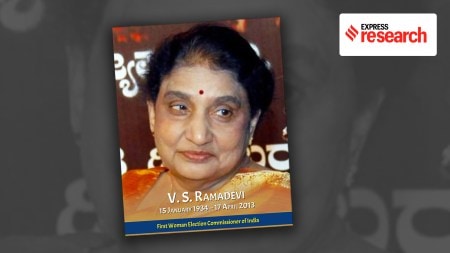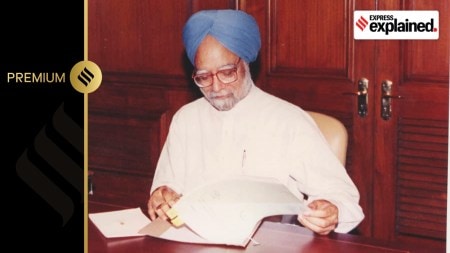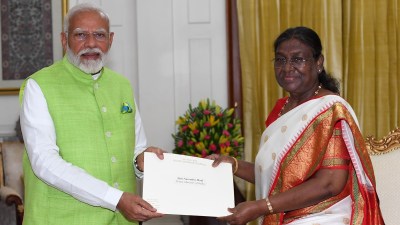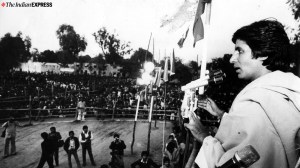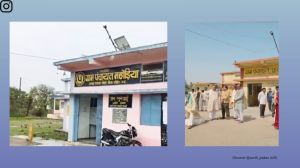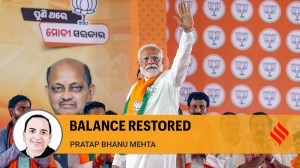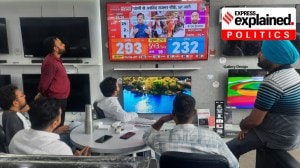- India
- International
As a mural comes up in Panaji, the muse, a 99-year-old Goan freedom fighter, looks on from her balcony
The underground voice of Goa’s liberation struggle, Libia turns 100 on May 25
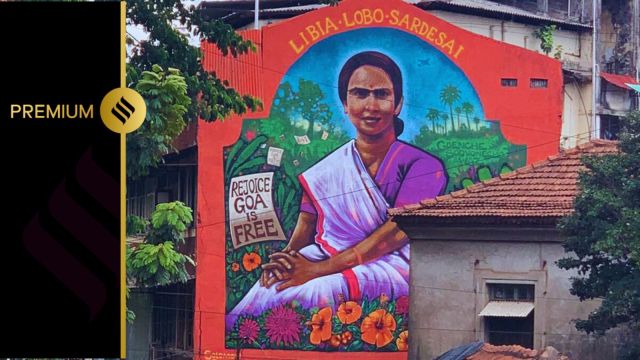 The mural painted by Solomon Souza.
The mural painted by Solomon Souza. “Rejoice brothers and sisters, Rejoice! Today, after 451 years of alien rule, Goa is free and united with the Motherland. Our brothers are there to protect you.”
On the morning of December 19, 1961 — the day Goa was liberated from Portuguese rule — Libia Lobo Sardesai and her colleague Vaman Sardesai flew over Panaji and other parts of Goa in an Indian Air Force (IAF) plane with a radio transmitter aboard and a loudspeaker fitted on the plane’s belly, dropping leaflets and announcing in Portuguese and Konkani that the Portuguese had surrendered.
“That was the last broadcast by our secret radio station,” recalls 99-year-old Libia at her house in Panaji.
The underground voice of Goa’s liberation struggle, Libia turns 100 on May 25. To commemorate her pivotal role in the coastal state’s liberation struggle, Israel-based street artist and painter Solomon Souza, the grandson of pioneering modernist painter from Goa Francis Newton Souza, has painted her mural on a wall across the road from her house. “I told him to put more light in my eyes,” she says, looking on from her balcony.
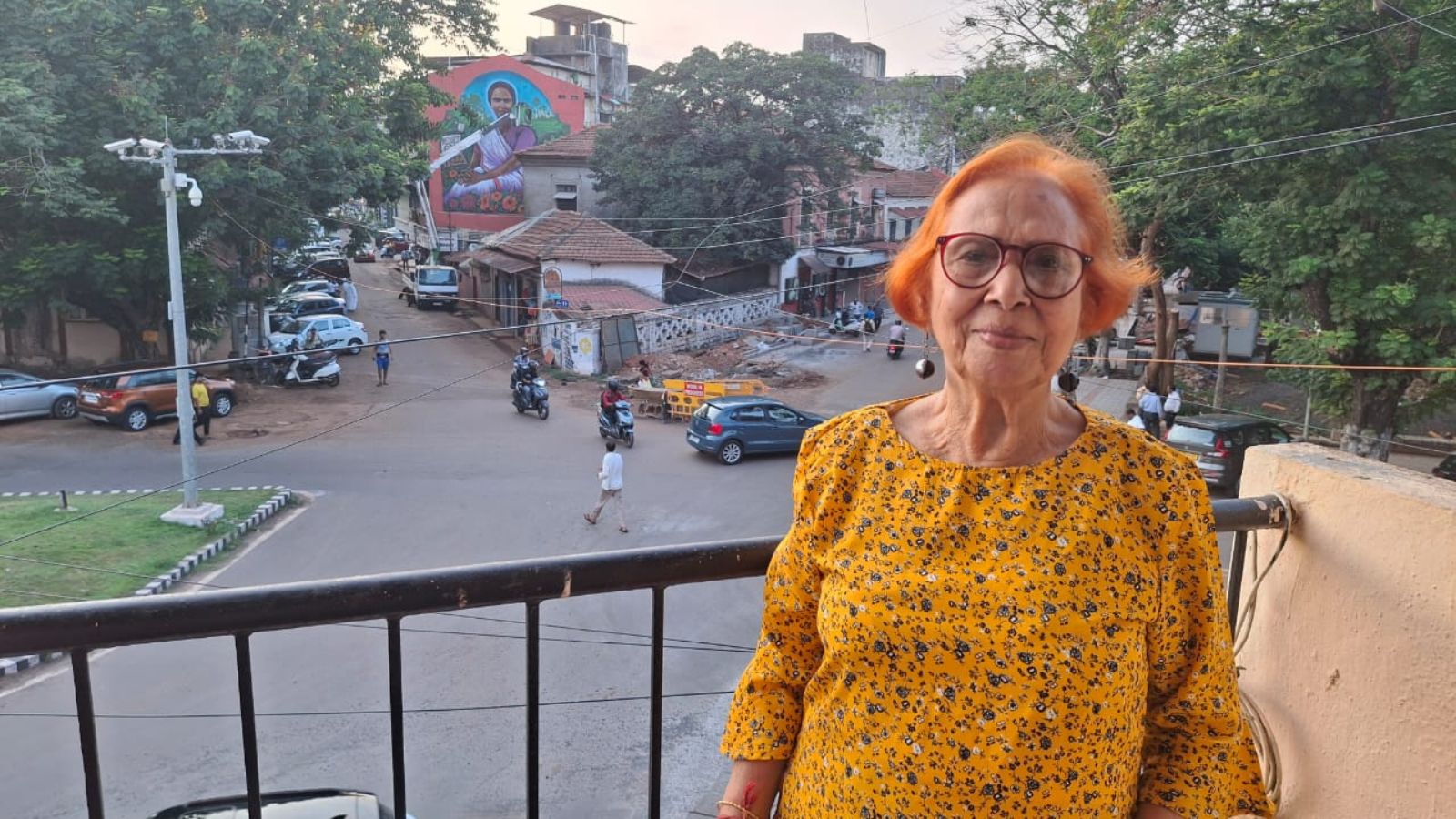 The mural has been painted on a wall across the road from 99-year-old Libia Lobo Sardesai’s Panaji house. (Express photo by Pavneet Singh Chadha)
The mural has been painted on a wall across the road from 99-year-old Libia Lobo Sardesai’s Panaji house. (Express photo by Pavneet Singh Chadha)
An underground radio station in the jungles
For six years from 1955 to 1961 — when Goan nationalist movement gained momentum and in the backdrop of suspension of all civil liberties under a Portuguese dictatorship in Goa — Libia and Vaman set up an underground radio station in the jungles on the outskirts of Goa to counter Portuguese propaganda, broadcasting news, speeches of Indian leaders in Parliament, updates on nationalist movement and anti-colonial struggle in their broadcasts.

On the eve of their final broadcast, Libia says she was informed by Lieutenant General J N Chaudhuri, then General Officer Commanding-in-Chief of Southern Command, at an army camp in Sambra in Belgaum, around 120 km from Panaji, that Portuguese forces were surrendering.
“The General asked me, ‘Kumari Lobo. What do you want to do now?’. Impulsively, I said I would like to go into the skies and announce that Goa is free. He took me seriously…We were warned that the plane could be shot down since Portuguese guns were still hidden somewhere, but we were not scared. I told them that it did not matter because if the plane is shot down, we will fall and die in a free Goa,” she told The Indian Express.
In 1954, after the Portuguese attacked and killed several Satyagrahis who had entered Goa to demand the end of colonial rule, India closed its borders with the state and imposed an economic blockade, curtailing free movement and trade. “Road, sea and rail links were snapped, and all communication could only be clandestine. In Goa, complete censorship was in force. Not even an invitation card or a calendar could be printed or circulated without the seal of the ‘censors’. People lived under a cloak of strict vigilance and suspicion. No outside papers or printed material were allowed to come in. A couple of local newspapers and the official Goa radio toed the Portuguese line, instilling fear and feeding false propaganda to the people of Goa,” said Libia.
“We were averse to violence. So, this was the only peaceful alternative to propagate our cause,” she added.
Two wireless sets, confiscated from Dadra and Nagar Haveli when these enclaves were freed from the Portuguese, were converted into a radio transmitter and a team was assembled. The radio station team comprised Libia, Vaman and Nicolau Menezes, a Goan nationalist who had been living in-exile in Bombay.
Isolated in the jungle, bitten by leeches
Named ‘Goenche Sodvonecho Awaz’ (Voice of Freedom of Goa) for Konkani broadcasts and ‘Voz de Liberdade’ for the Portuguese ones, the station began beaming an hour-long programme in the morning and evening. The first broadcast — from a transmitter mounted on a truck in a forest in Maharashtra’s Amboli, over 100 km away — started on November 25, 1955, the day of Goa’s reconquest by the Portuguese in 1510. For the first few months, the trio and Menezes’s wife Alda lived in the Amboli jungles in the Western Ghats, battling isolation and reptiles, while putting together bulletins.
“We were isolated, incognito and (remained) incommunicado. The forests were full of leeches and snakes. Though we wore gumboots, one could not take a few steps without being bitten by leeches and our feet were often covered in blood,” said Libia.
Menezes and his wife returned after a few months, but Libia and Vaman relocated to Castle Rock village in Karnataka, around 50 km from Goa, to continue the broadcasts. “Some people had been caught trying to make enquiries about us, so we relocated for our safety. On occasions, the Portuguese would jam our frequency,” she said.
Libia and Vaman, who got married in 1964, both had a background in radio. Vaman, a student of medicine, had been arrested in 1947 for distributing “anti-colonial literature” and was sentenced by the Portuguese Military Tribunal to nine months’ imprisonment, besides the forfeiture of his political and civil rights for five years. After his release, he joined the External Services Division at All India Radio in Bombay.
Libia was born in Goa, but her family later shifted to Bombay. During World War II, she worked as a “censor” and a translator, deciphering “cryptic” letters written by Italian prisoners of war. Soon, she landed a job as stenographer at All India Radio in Bombay, where she also worked as a librarian. Simultaneously, she pursued law. During her college days, she became closely associated with the Goan nationalist movement.
Meanwhile, the Goa Vimochan Sahayak Samiti was formed, which saw active participation of Indians in Goa’s liberation movement. On August 15, 1955, a mass Satyagraha was called and the Portuguese responded by opening fire on unarmed Satyagrahis entering Goa. The Satyagraha was suspended after that.
Libia says the task of their radio station was multifold: to sustain the morale of Goans by informing them about the progress of the freedom struggle inside and outside Goa; to demoralise Portuguese officials by exposing the cruelties committed by their secret police and to highlight the sufferings of the people under Antonio de Oliveira Salazar’s dictatorship; to counter Portuguese lies about India; and to show that it was not a solitary struggle of Goans but was united with other anti-colonial struggles in Asia and Africa.
“Though the International Court of Justice gave its final verdict in India’s favour in the case of Dadra and Nagar Haveli, the Portuguese government official radio, ‘Emissora de Goa’ reported that the verdict was in favour of Portugal and that Portugal had won the case. On our broadcast, the proceedings of the Hague Tribunal in the case were reported verbatim, thereby exposing the lies of the Portuguese,” said Libia.
That the radio station had become a headache for the Portuguese is evident from a report by Portuguese Army Commandant Major Felipe de Barros Rodrigues to his seniors, “The Voice of Freedom has assumed the command of the entire propaganda and has maintained its aggressiveness and militancy…It threatens, criticises, persuades, explains, changes colours, alters perspectives, but in everything it says, it carries a sharp stiletto. Operating from beyond the border and free from the preoccupation of any attack from our side, it has been, in fact, the only voice which has been hurting us at close range.”
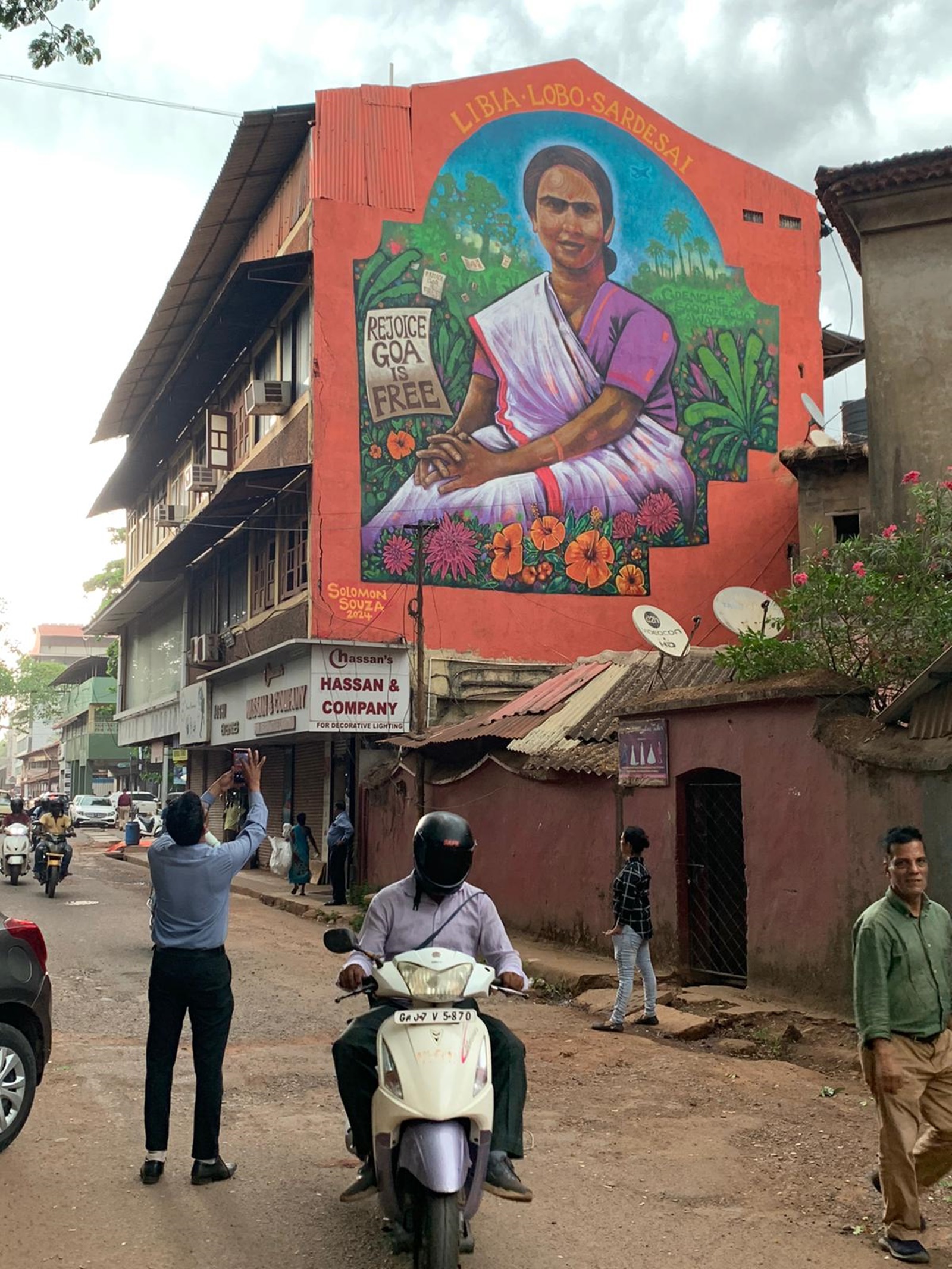 Solomon Souza has painted several murals in Panaji.
Solomon Souza has painted several murals in Panaji.
Broadcasting a direct message from the Union Defence Minister
On December 15, 1961, days before Operation Vijay was launched to liberate Goa, Libia and Vaman received a message from the Indian border security police, asking them to pack up for safety reasons. “Shortly, a police jeep arrived at our hideout in Castle Rock and we were taken to a bungalow in Belgaum. During the overnight journey, we saw troops and tanks marching towards Goa. The transmitter was set up in the bungalow and we kept broadcasting information about troop movement,” she said.
On December 17, 1961, the station relayed a direct message from Union Defence Minister V K Krishna Menon addressed to the Portuguese Governor General, asking him to surrender to prevent “unnecessary casualties”. Menon’s message warned that the Indian forces were marching towards Goa and asked him to send his reply through the radio via a specific wavelength. “We broadcast that message almost every hour for two days, but the Portuguese did not take it seriously and there was no reply. Soon, Operation Vijay commenced,” said Libia.
Solomon Souza, who has painted several murals in Panaji, said he had come to Goa last month to celebrate his late grandfather’s 100th birthday, when he met Libia through a common acquaintance. “Libia and my grandfather were childhood friends. She has an amazing story. So, I decided to paint a mural to honour her legacy,” said Souza.
“I am happy that I will be remembered even when I am not there. I would like to be remembered as a patriot. I have lived my life without counting my years,” Libia said.
Jun 05: Latest News
- 01
- 02
- 03
- 04
- 05


